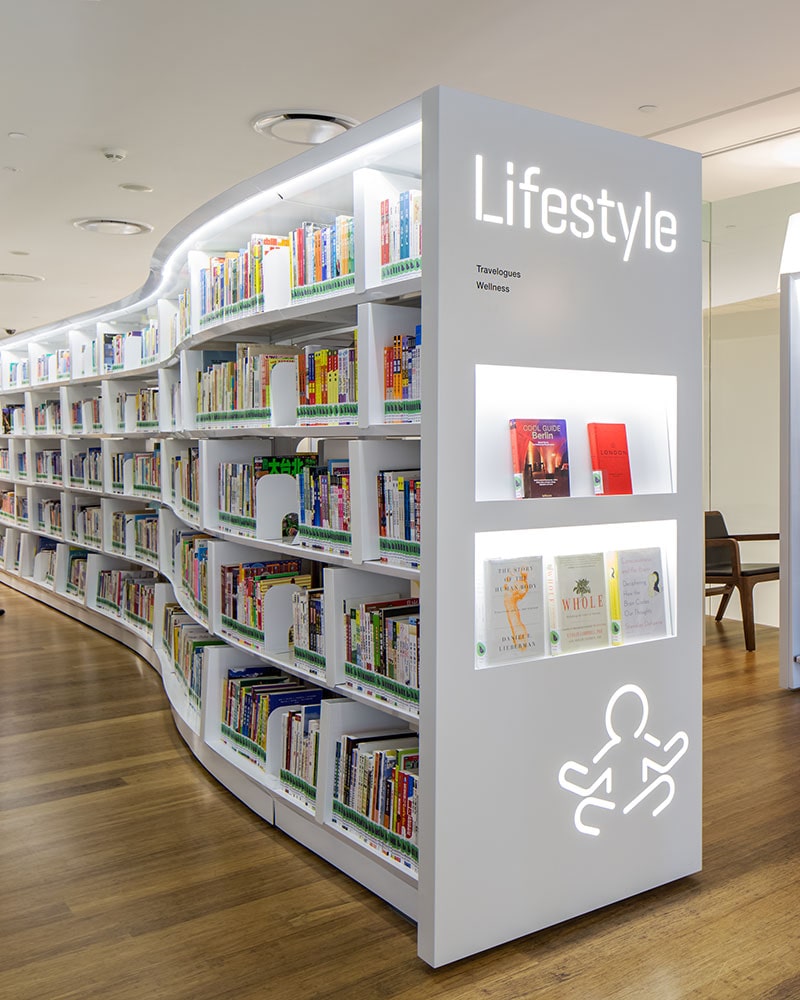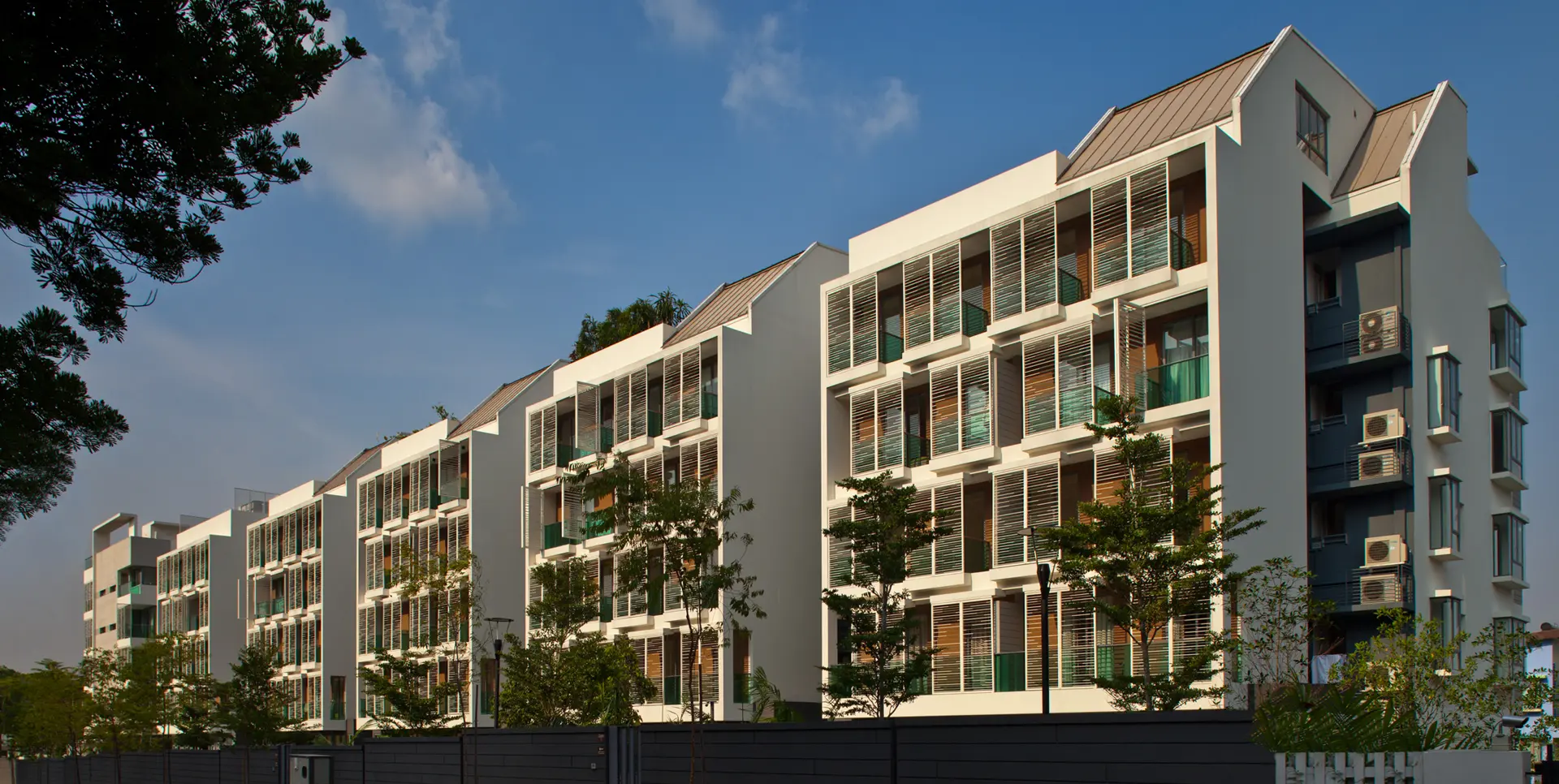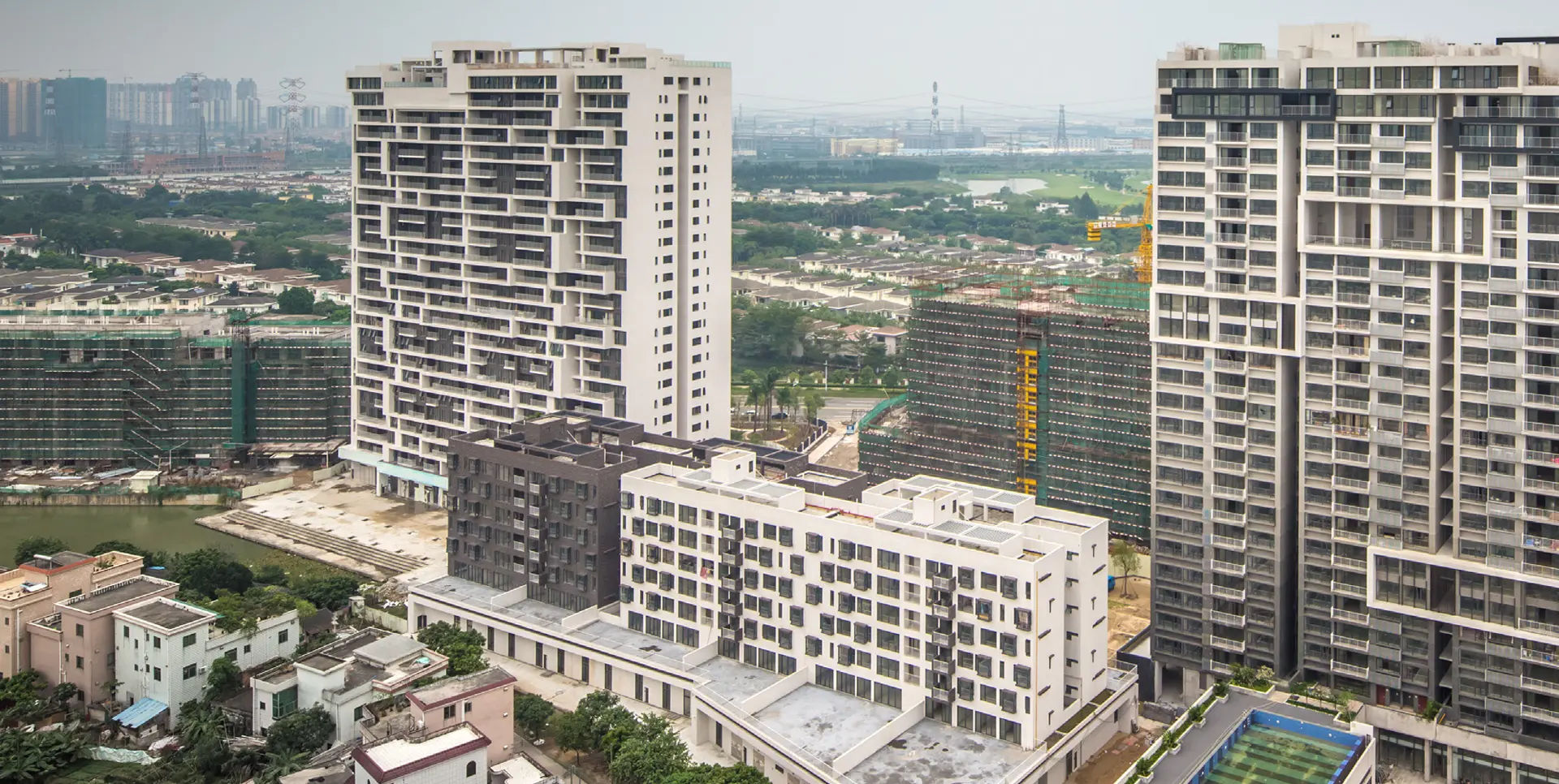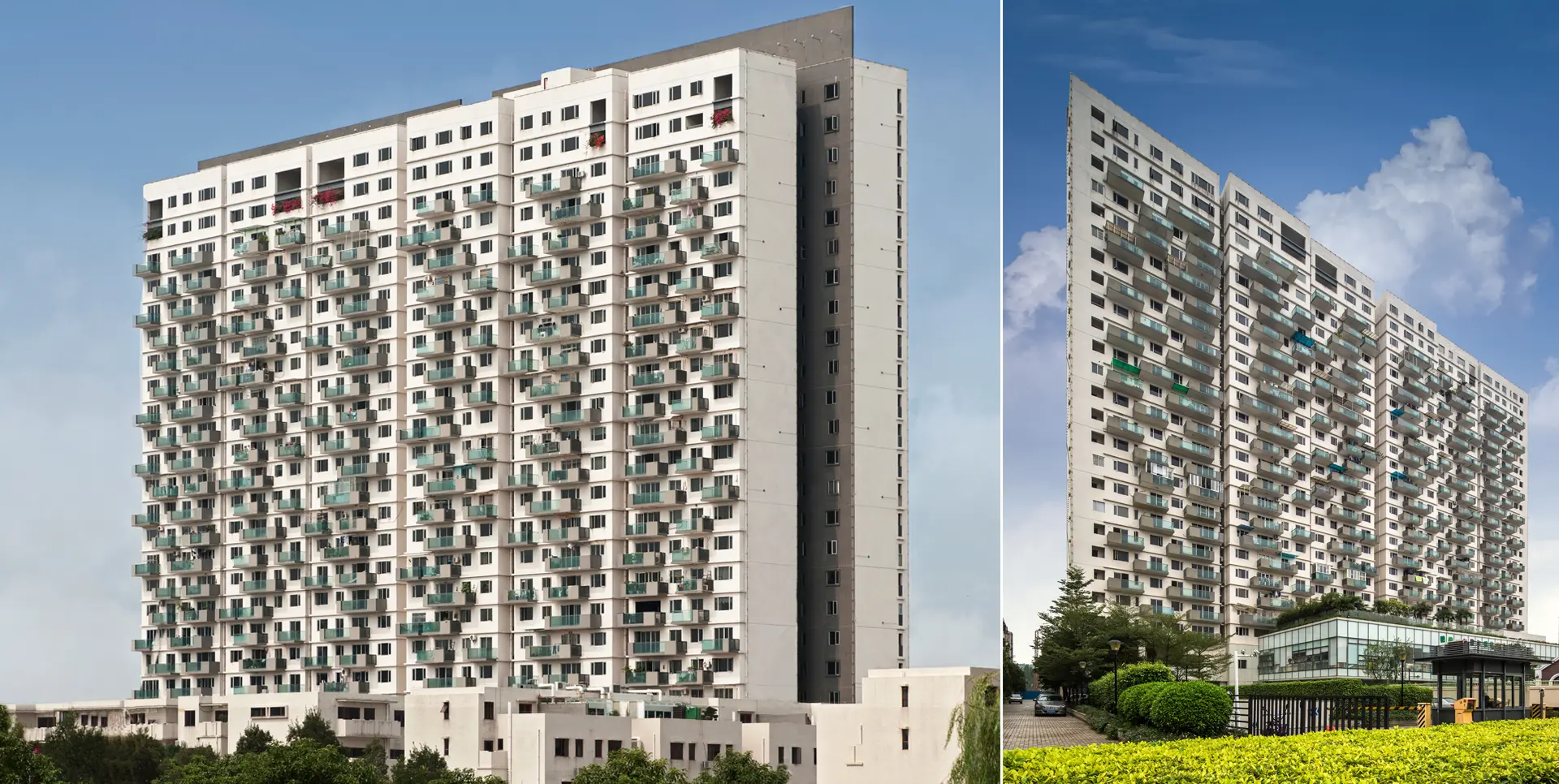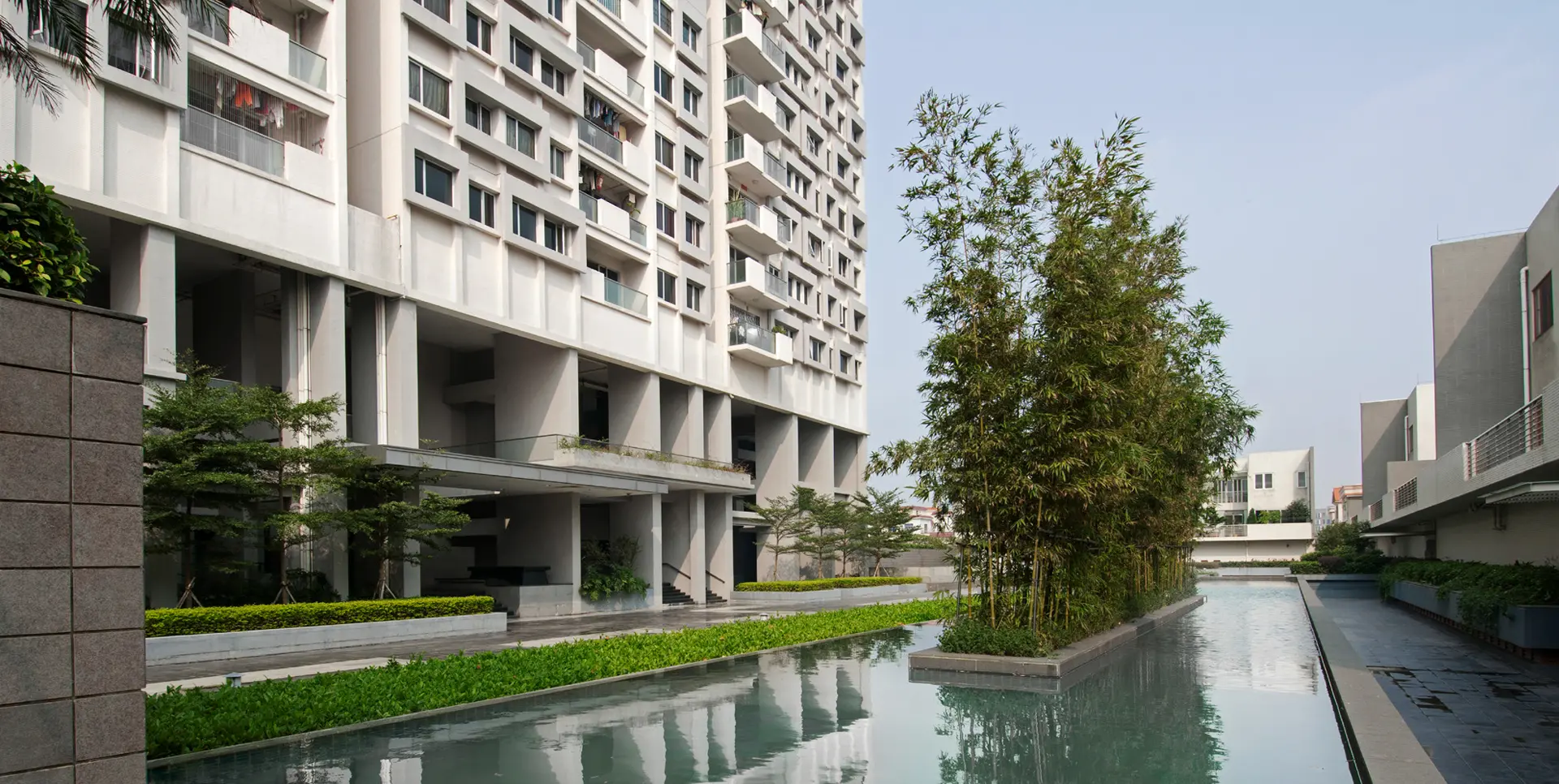Ronggui Lakeside Condominium redefines the architecture of high-density living by turning spatial limitations into creative opportunities. Located on a long, narrow site in Shunde, Guangzhou, the development breaks away from monotonous urban typologies through a dynamic play of colour, pattern, and massing. Drawing inspiration from mosaic art, the façade composition introduces gradated tones and seemingly random pixelations, creating the illusion of multiple design authors and lending each block its own identity.
This thoughtful articulation not only breaks down the project’s scale but also enhances visual rhythm across the skyline. Set against breathtaking dual vistas—one toward the historic Lingnan water village and the other to the city’s lush green horizon—the project integrates layered landscaping and water features, offering a serene yet vibrant residential experience rooted in aesthetic contrast and contextual sensitivity.
Location
China
Completion
2011
GFA
106, 728 sqm
Client
Guangdong Dongyiwan
Property Dev Co Ltd
Services
Architecture
A Mosaic on the Water’s Edge
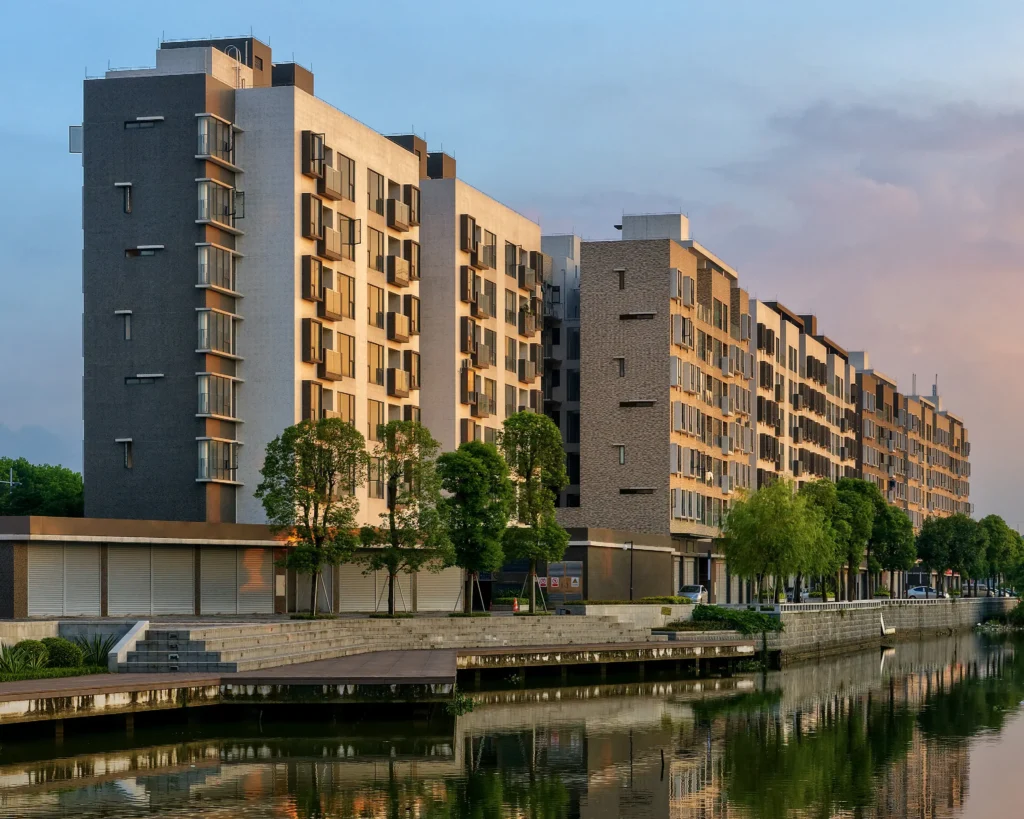
The rhythmic elevation of Ronggui Lakeside, where modular volumes and pixelated façades reflect elegantly across the water, reinforcing the concept of architectural contrast.
A juxtaposition of light and dark textures gives each residential block a distinct identity, while vertical window panels and perforated shutters generate a lively façade play under shifting sunlight. Framing the calm canal, the structure’s mirrored presence emphasizes both its serene context and the vibrancy of its visual articulation.
The project’s architectural articulation reflects a thoughtful balance between repetition and variation, where consistent building heights and aligned window grids are offset by staggered balconies and changing façade materials.
By harmonizing contextual sensitivity with modern design elements, Ronggui Lakeside transforms a simple residential development into a dynamic urban gesture that celebrates both community interaction and architectural identity.
Façade Rhythm and Functional Density
This elevation and floor plan layout showcase the architectural strategy of Ronggui Lakeside, where a modular approach organizes multiple residential blocks along a linear waterfront site. The façade composition plays with alternating volumes, voids, and window rhythms, creating visual interest while maintaining functional clarity. The articulation of balconies, vertical fins, and subtle material shifts breaks the massing into a human-scaled urban edge. Internally, the plans demonstrate efficient spatial planning across unit types, with careful circulation and service zoning. The integration of communal facilities and public amenities, such as a central promenade and lap pool, reinforces the site’s identity as a cohesive residential community grounded in spatial rhythm and urban connectivity.

Ronggui Lakeside demonstrates how thoughtful architectural articulation can transform high-density housing into a refined urban experience. By combining façade variation, functional clarity, and strategic integration of communal amenities, the project fosters both visual richness and livability. This approach not only enhances the daily experience of residents but also contributes to a vibrant and cohesive architectural identity along the waterfront.
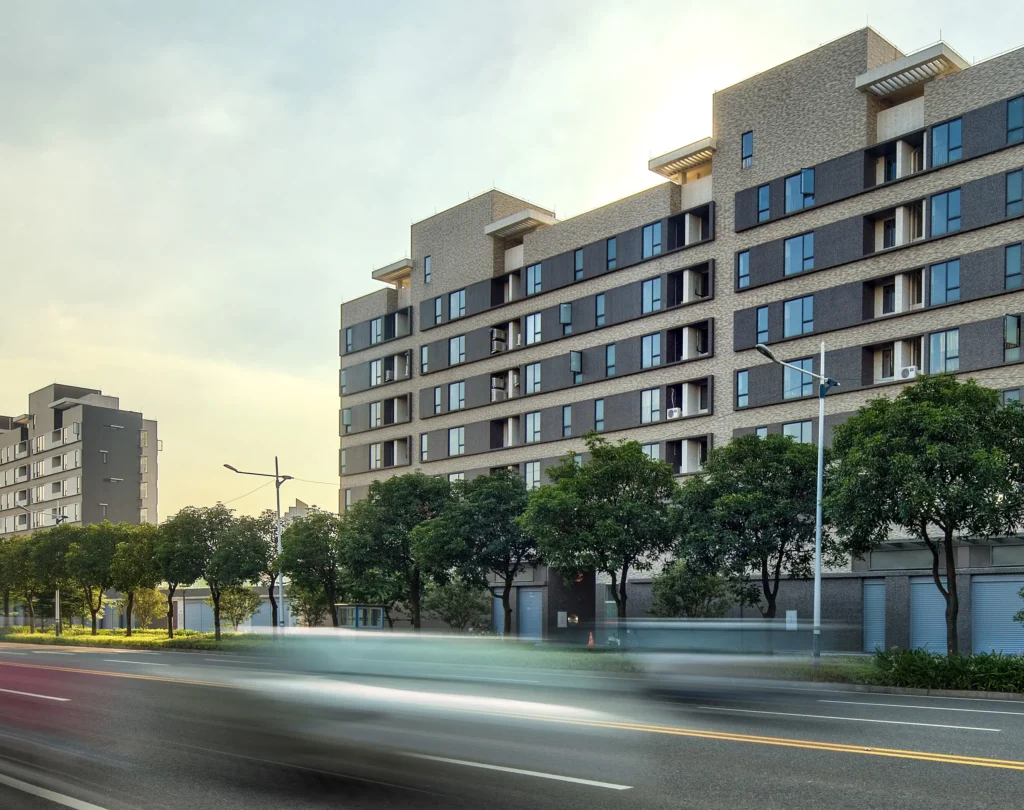
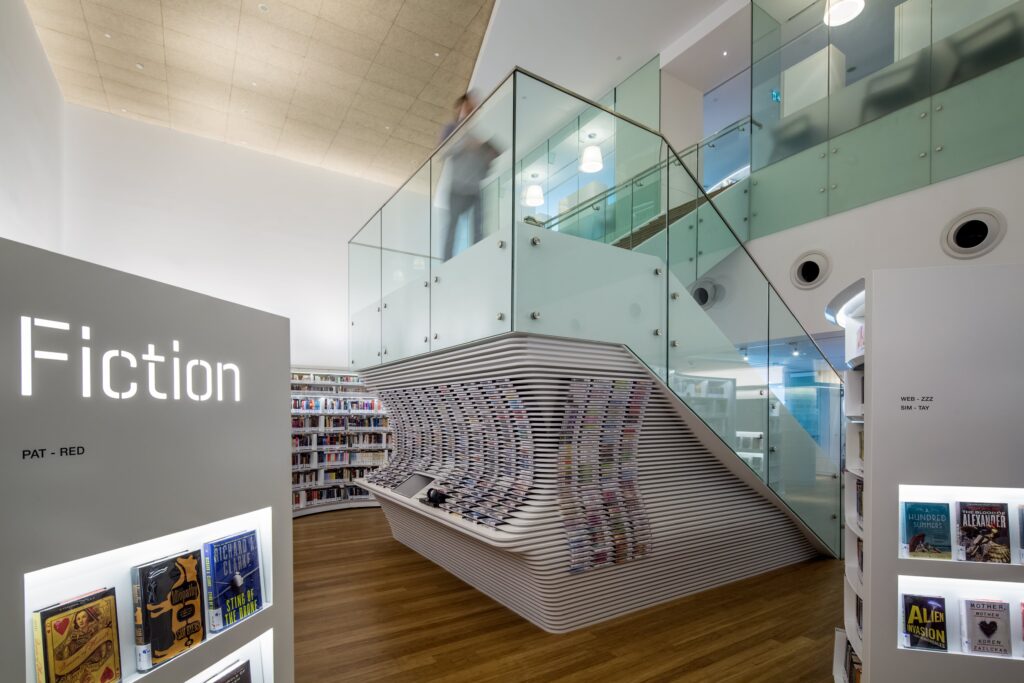
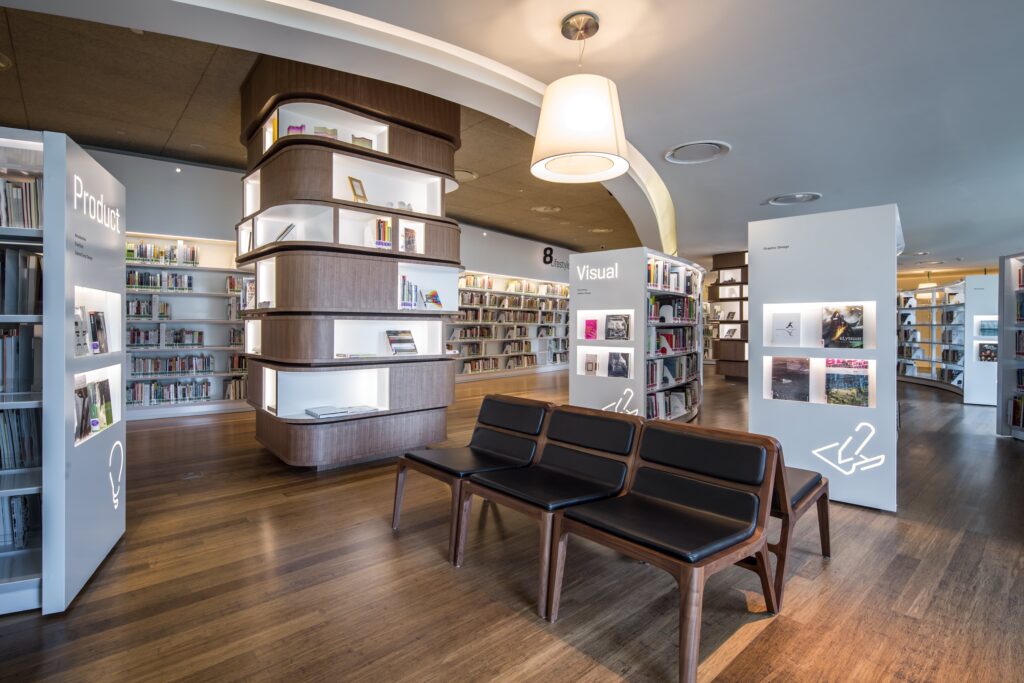
Top: Top
Bottom: Bottom
Right: Right
